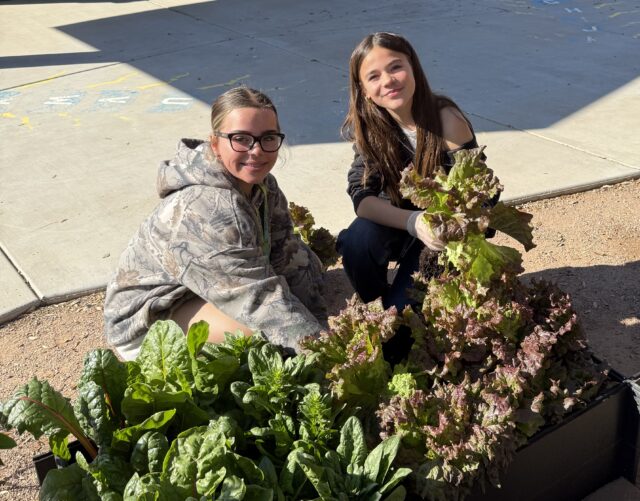There’s something happening in Scottsdale’s public schools.
It doesn’t involve test scores or new technology. Instead, it’s about pumpkins, walking clubs, painted birdhouses and snack carts.
Four schools in the Scottsdale Unified School District have now been recognized by the Blue Zones Project, a community well-being initiative inspired by places in the world where people live the longest and healthiest lives. And it’s not just a title. These schools have taken steps, some small, some significant, to make health and happiness part of everyday life for their students and staff.
Anasazi Elementary led the charge earlier this year, followed by Echo Canyon School, Pima Elementary and, most recently, Cocopah Middle School.
At Anasazi, the idea fits the school’s International Baccalaureate program. Principal Jennifer Waldron saw immediate alignment between the Blue Zones approach and her school’s emphasis on whole-child learning.
One example: Instead of the usual sugary incentives for good behavior or grades, students now enjoy class parties stocked with healthier choices. The school also hosts a “Pumpkin Plod,” a walk-to-school event that makes fitness feel like fun.
Across town at Pima Elementary, Principal Christopher Hodo leaned into the idea after speaking with Waldron and Echo Canyon’s Kat Hughes. His staff and parent council were all in. It turns out that Pima students were already doing much of what Blue Zones encourages—tending school gardens, recycling, and taking “U-Time” for mindfulness and team building.
Recess happens before lunch at Pima. It’s a small change that encourages mindful eating and less food waste. The school also weaves wellness facts into its daily announcements, making health a natural part of the school day.
Then there’s Cocopah Middle School, where the campus has blossomed—literally and figuratively. New gardens dot the grounds. Students can grab fruit or a granola bar from a roaming snack cart funded by the parent association. A daily walking club gets students moving during lunch, and composting has become second nature, thanks to thoughtful coordination from the student council and a subcommittee devoted to Blue Zones efforts.
School nurse Sarah Patel credits parent volunteers, especially APT President Samantha Dollard and master gardener Kip McCormick, with helping bring the school’s vision to life. “Our kids have embraced it,” Patel said, noting that the composting and gardening programs are now supported by science and life skills classes alike.
Blue Zones, Patel added, go beyond food and fitness. “We’ve had students write letters to local seniors, and we’re working with the Mollen Foundation on farm-to-table education. It’s about building real connections—to health, to nature, and to one another.”
Cocopah Principal Joseph Olney called it a transformation. “It’s been amazing to see how this project brought everyone together—staff, students, parents, the community. It’s pretty impressive.”
That transformation will be celebrated on Earth Day, April 22.
As more SUSD schools begin planning their own Blue Zones journeys, there’s a growing sense that something meaningful is taking root across the district.
And in a world that can feel rushed and overcomplicated, maybe that’s the lesson—slow down, plant something, take a walk with a friend, and watch what happens.

















